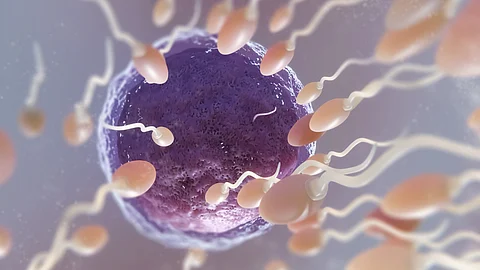Sperm Donor's Hidden Cancer Gene Affects 10 Children Across Europe
A sperm donor unknowingly carried a rare cancer-related mutation in the TP53 gene that is usually associated with Li-Fraumeni syndrome, a severe inherited cancer risk condition. At least 67 children across Europe were born from his donated sperm between 2008 and 2015. Sadly, 10 of these children had already been diagnosed with cancer, including leukemia and non-Hodgkin lymphoma.
How was it discovered?
The alarming discovery began when two unrelated families approached their fertility clinic after their children were diagnosed with cancer. Genetic testing revealed that both children had the same TP53 mutation. This led to a wider investigation that traced the cases back to the same sperm donor.
Pediatricians and geneticists in eight European countries were alerted. Testing confirmed that 67 children from 46 families were conceived using the donor’s sperm. Of these, 23 children developed the mutation, and 10 have since developed cancer.
Experts Sound the Alarm on Fertility Regulations
Dr. Edwige Kasper, a biologist at Rouen University Hospital in France, presented the findings at the European Society of Human Genetics conference in Milan. She stressed the need for limits on how many families can use a donor.
“We need to have a European limit on the number of births or families for a single sperm donor. We can’t do whole-genome sequencing for all sperm donors – I’m not arguing for that. But this is the abnormal dissemination of genetic disease. Not every man has 75 children across Europe,” she said.
Kasper and her team used population data, genetic databases, and advanced computer models to analyze the mutation. They confirmed his potential cancer risk and recommended that affected children receive immediate genetic counseling.
“I analysed the variant using population and patient databases, computer prediction tools and the results of functional trials and came to the conclusion that the variant was probably cancer-causing and that children born from this sperm donor should receive genetic counselling,” she explained.
Increased surveillance of affected children
Children who inherit the TP53 mutation are now being closely monitored. Doctors routinely recommend full-body MRIs, brain scans, and abdominal ultrasounds. As they grow, breast MRIs are also recommended to catch early signs of cancer.
The fertility industry is facing tough questions.
The European Sperm Bank, which provided the donor's sperm, admitted that at least 67 babies were conceived using his samples. However, it did not disclose the exact number. Spokesperson Julie Paulli Budtz expressed deep concern and highlighted the difficulty of screening for rare genetic mutations.
Budds said, “We are deeply affected by this case. We welcome continued dialogue on setting an internationally mandated family limit and have advocated for this on several occasions. This is also why we have proactively implemented our own international limit of 75 families per donor.”
A call for reform
The matter has raised issues pertaining to transparency and cross-border regulations, and how fertility clinics maintain donor data. “Is 67 the total? It’s a really good question that I’ve asked the sperm bank. They didn’t want to tell me the denominator of the births for this donor,” Kasper said.
Experts and families have demanded clearer rules and better coordination to avert similar tragedies.
Reference:
1. Bawden, Anna. “Sperm Donor’s Cancer Risk Passed on to Children in Europe.” The Guardian, May 23, 2025. https://www.theguardian.com/science/2025/may/23/sperm-donor-cancer-risk-children-europe.
(Input from various sources)
(Rehash/Muhammad Faisal Arshad/MSM)


